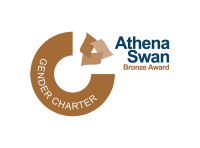

Large quantities of bronze - amounting to tonnes - were buried in isolated hoards in Europe during the final stages of prehistory, mainly during the Bronze Age and extending into the Iron Age. This practice was particularly intense on the Atlantic façade of the continent and, despite many years of research and lengthy scientific discussion, even today we do not understand what motivated such disparate and widespread communities to express themselves in this way.
The aim of this project is to analyse an enigmatic piece in this puzzle: the hoards of mass-produced and unused axes with high levels of lead and/or tin that appear in several areas of the European Atlantic façade during the Late Bronze Age - Iron Age transition. The specific objectives we aim to deal with are: 1) to determine the provenance of the lead used in the alloys; 2) to improve our knowledge of the metallurgical technology; 3) to determine whether the weight of the axes is connected to any weighing system of Mediterranean origin; 4) to refine the chronology of this mass production and deposition phenomenon; 5) to determine the specificity and variability of such deposition practices; and 6) to generate an explanatory model for the phenomenon and frame it in the transformations experienced by the Atlantic communities in the aforementioned transition period.
We will use lead isotope analysis to attempt to determine whether the high-leaded bronzes from the Atlantic region could be the result of copper-lead ingot circulation from the Phoenician area, as suggested by our preliminary isotopic results from leaded palstaves found in northwestern Iberia. The technological and functional evaluation of the axes will be based on an archaeometric study of a selection of materials and the hypotheses will be further assessed through experimental archaeology. The potential use of Cu-Pb ingots suggests the production of ternary bronzes through cementation with cassiterite, but we will use experimentation to check this and the whole range of other possibilities. On the other hand, data compilation regarding metallurgical production in settlements, alongside the exhaustive inventory of the hoards in selected geographical areas, will allow us to refine the chronology of the phenomenon and to identify the deposition patterns, as well as to assess the changes in the production-deposition scales and check them against the available palaeoenvironmental data.
The project will contribute to our understanding of a highly significant phenomenon in the Late Bronze Age - Iron Age transition in Atlantic Europe, the mass production and deposition of metal, paying particular attention to the impact of the Phoenicians on the transformation of previously existing trade networks. The data generated, in particular those of an archaeometric nature, will have a high reuse potential and will contribute to the reappreciation of the metal collections in several museums of Atlantic Europe.
This project (HAR2017-84142-R), led by Xose-Lois Armada at Incipit-CSIC, has received funding from the Spanish Ministry of Economy, Industry and Competitiveness, and the European Regional Development Fund (ERDF, EU).
Team members
Xose-Lois Armada (Incipit, CSIC)
Ignacio Montero-Ruiz (CSIC)
Beatriz Comendador Rey (Universidade de Vigo)
Eduardo Galán (Museo Arqueologico Nacional, Madrid)
Marcos Martinón-Torres (University of Cambridge)
Antonio Martinez-Cortizas (Universidade de Santiago de Compostela)
Raquel Vilaça (Universidade de Coimbra)
Duncan Hook, Neil Wilkin (British Museum)
Ignacio Soriano Llopis (Universidad Autonoma de Barcelona)
Pau Sureda (Incipit, CSIC)
Oscar Garcia Vuelta (CSIC)
Aaron Lackinger (Universidade de Vigo)
Funder
Spanish Ministry of Economy, Industry and Competitiveness, and the European Regional Development Fund (ERDF, EU).


